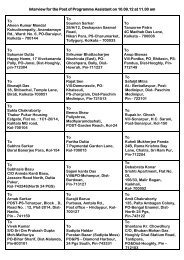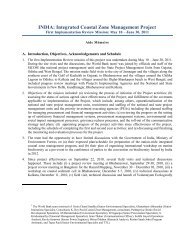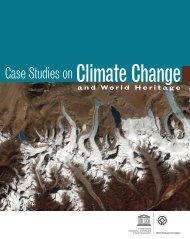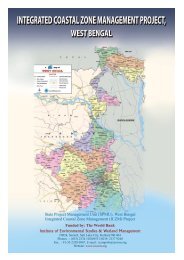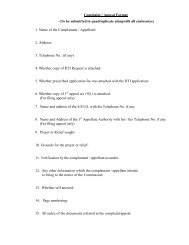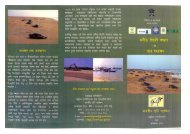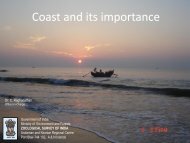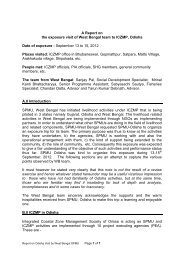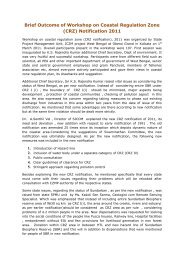Cyclone and Storm Surge - Iczmpwb.org
Cyclone and Storm Surge - Iczmpwb.org
Cyclone and Storm Surge - Iczmpwb.org
Create successful ePaper yourself
Turn your PDF publications into a flip-book with our unique Google optimized e-Paper software.
1.4<br />
5. Proposals for location of cyclone shelters <strong>and</strong> suggestions for missing road links. These<br />
have to be done on the basis of the vulnerability studies.<br />
6. Proposals for suggesting relief to the urban dwellers of Kolkata by way of removing storm<br />
water in a more effective way <strong>and</strong> prevent congestion of water in the streets during a<br />
cyclonic depression.<br />
1.3. Scope of the work <strong>and</strong> limitation<br />
In order to effectively tackle the project in the limited time available, it was decide to depend upon<br />
secondary data as available from various sources. The scope of the work thus includes the collection<br />
of appropriate data, both in the form of statistics <strong>and</strong> written documents as well as in maps <strong>and</strong><br />
integrating them together to form an overall database useful for the study. The cyclonic storm data<br />
have been obtained from the Indian Meteorological Department. The bathymetry of the oceans,<br />
particularly the Bay of Bengal has been obtained from an international website. The present day<br />
location of embankments <strong>and</strong> mangrove forests have been derived from satellite imageries, with the<br />
help of the Regional Remote Sensing Service Centre (ISRO), located within the campus of IIT<br />
Kharagpur. The bathymetries of the rivers have been obtained from the Kolkata Port Trust. Details of<br />
embankments have been acquired from the Irrigation <strong>and</strong> Waterways Department, Government of<br />
West Bengal. The details about the storm water disposal of the city of Kolkata have been derived<br />
from the information supplied by the Kolkata Municipal Corporation. The base map for preparing the<br />
GIS integration was done from the topo-sheets of the Survey of India. The Development Block<br />
boundaries were digitized from the District Planning maps of the National Thematic Mapping<br />
Organisation. The Block-wise statistics on housing was extracted from the Census of India data.<br />
The basic data collected above was integrated into a GIS database that provided the framework for<br />
further analysis. The storm surge analysis was carried out by the IIT Delhi numerical model <strong>and</strong> the<br />
river flood analysis was done with the help of the software MIKE FLOOD, a numerical simulation<br />
model of DHI. On the basis of these studies, appropriate mitigation measures have been suggested,<br />
which are in line with those suggested by the various technical departments of the Government.






